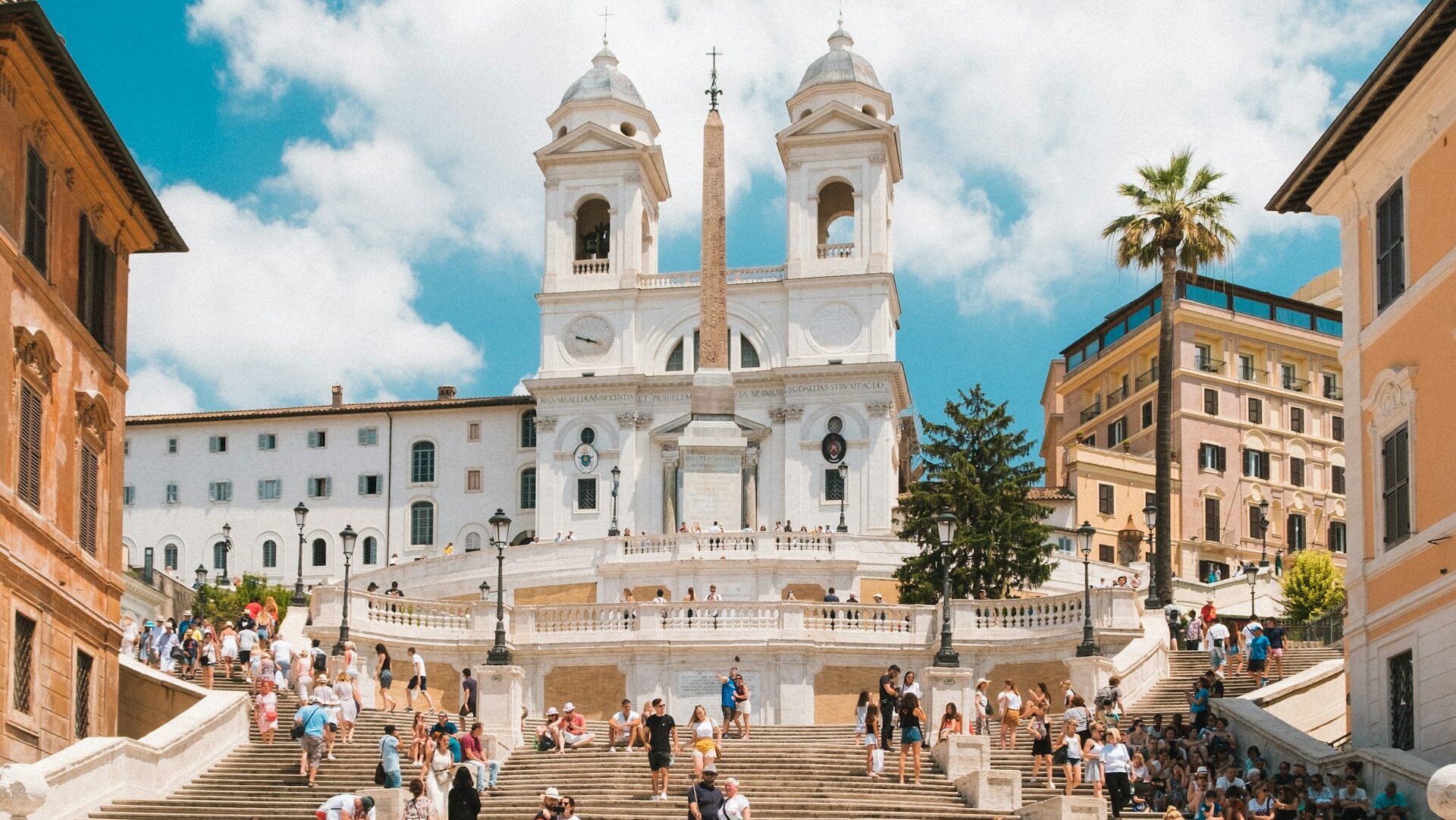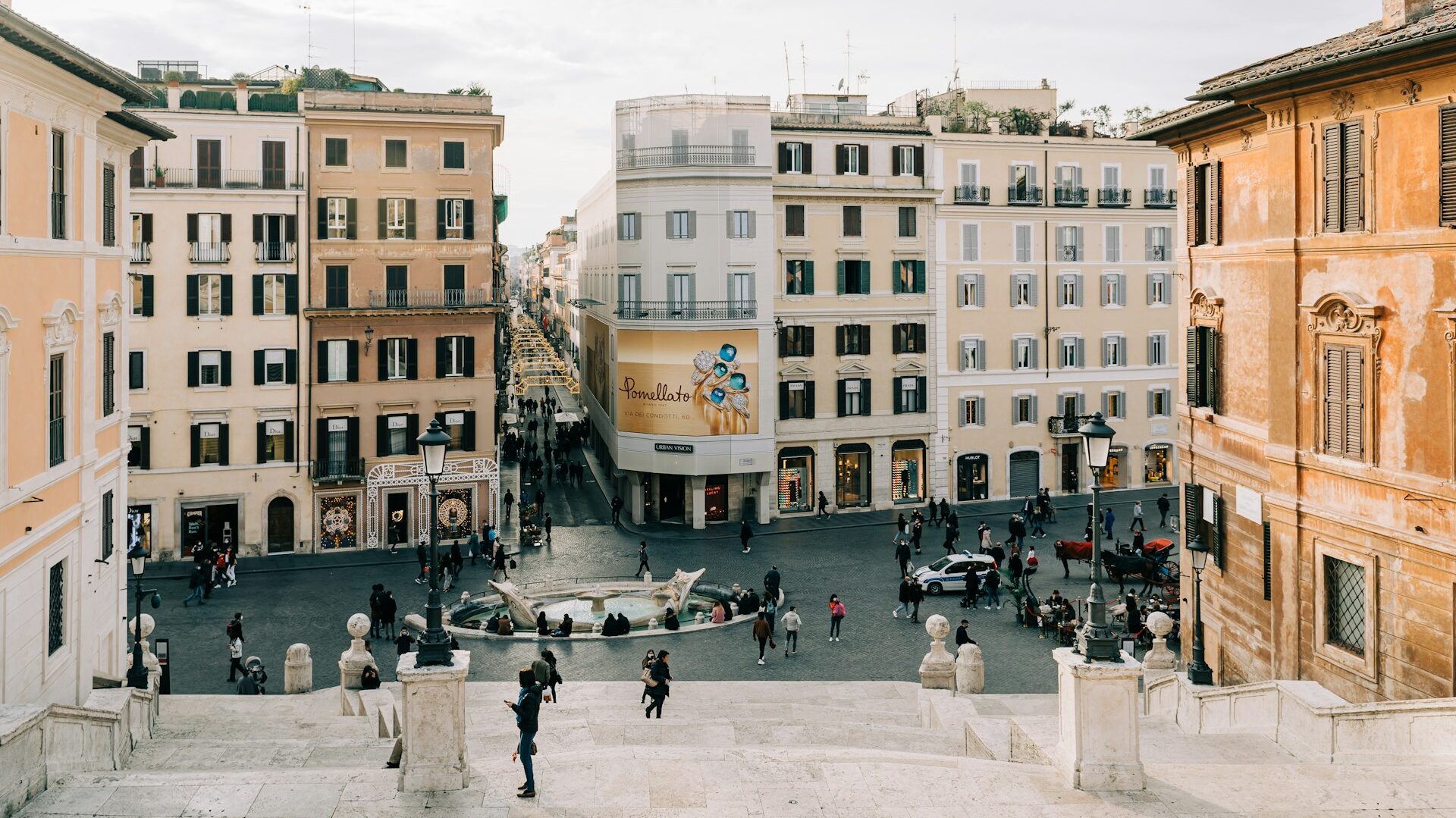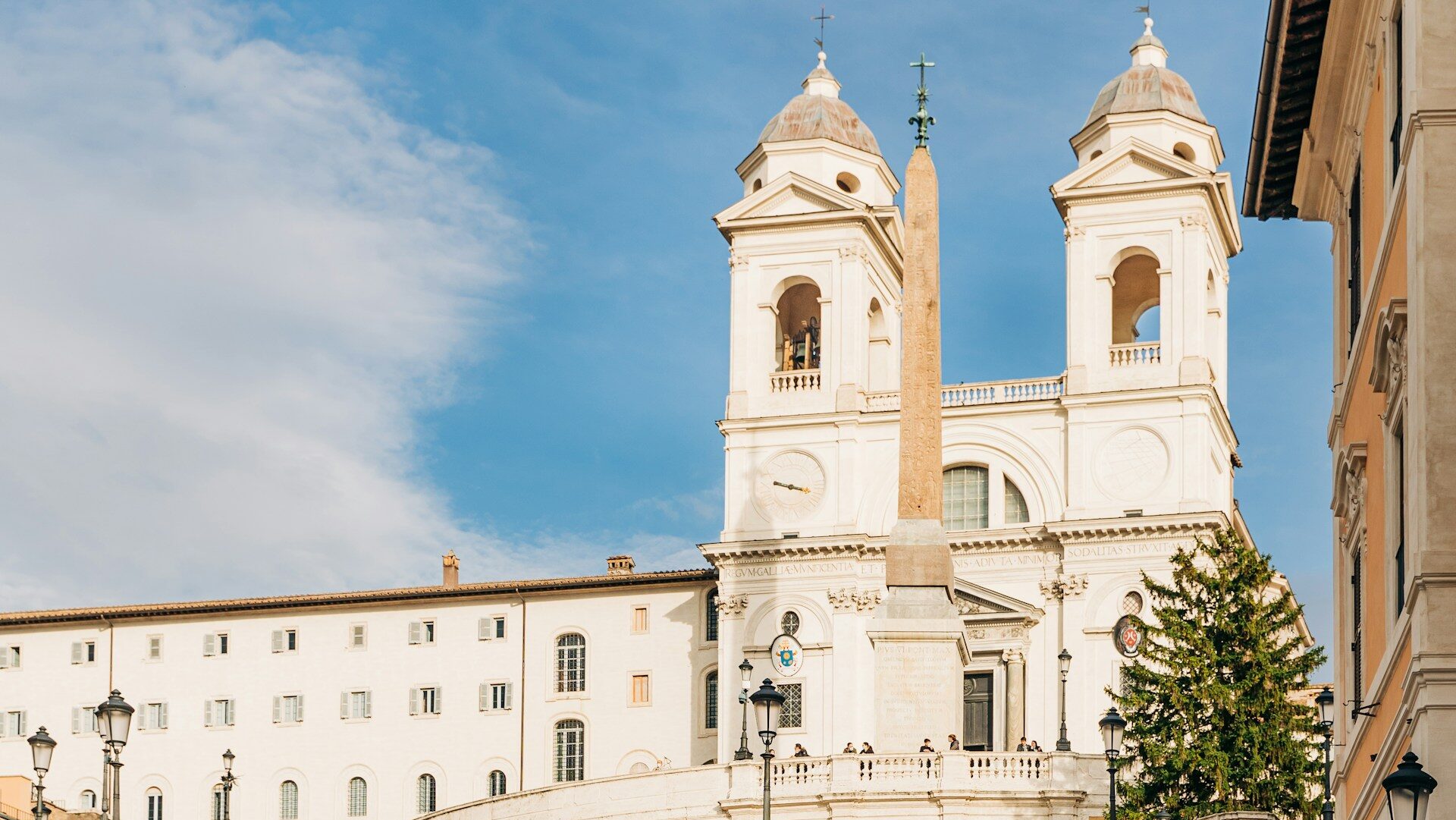Itinerary
Disclaimer
Posts on Visit-Rome.net may contain affiliate links, meaning I get a small commission if you decide to make a purchase through my links, at no cost to you. Any income earned helps maintain this website and keeps it ad-free.
Spanish Steps Rome – Guide and Information
Spanish Steps Rome – Guide and Information
Tourist Information for the Spanish Steps in Rome


The Spanish Steps Rome connect the Piazza di Spagna with the Piazza Trinità dei Monti at the top. The impressive staircase, made of 135 steps, three terraces, sculptures and fountains, makes it one of the most famous landmarks in the city.
The area around the Spanish Steps is known for its vibrant atmosphere, with plenty of art galleries, shops and cafes. Today it is a legendary symbol of the rich ancient history of Rome.
In this article you will find everything you need to know to plan your visit.
Spanish Steps Rome – General Information |
|
Location |
Piazza di Spagna, 00187 Roma RM, Italy |
Opening Times |
The Spanish Steps are always open so you can walk up and down anytime during the day or in the evening. |
Entry and Tickets |
The Spanish Steps are free to visit. You can also opt for joining a walking tour for a more enriching experience. |
Table of Contents
What to see at Spanish Steps Rome
Besides admiring the grand staircase, here are a few things you can’t miss during your visit:
Fontana della Barcaccia
On the Piazza di Spagna, right at the bottom of the steps, you can find a fountain called ‘Fontana della Barcaccia‘, which in English means ‘Fountain of the old boat’, built by Pietro Bernini. He was inspired by the legend of a boat that landed nearby in 1598 after the river Tiber flooded.
Trinità dei Monti Church
This church with a mix of Gothic and Renaissance architectural styles is located at the top of the Spanish Steps. It’s renowned by its twin bell towers, interior chapels and beautiful artwork.
In front of the church, you can find the Sallustiano Obelisk, which is covered with Egyptian hieroglyphs. This 14-metre tall obelisk is considered one of the smallest in Rome, and unlike others, it wasn’t brought from Egypt but was made in the city during the Roman Empire.


Azalea flowers
If you are visiting Rome during the springtime, don’t miss the opportunity to visit the Spanish Steps decorated with hundreds of azalea flowers. This event called ‘Infiorata‘ is a spring feast dedicated to the anniversary of Rome’s foundation (April 21st).
Keats Memorial House
In one of the corners of the piazza you can find the house where English poet John Keats lived and died. This house has now been converted into a museum dedicated to his memory.
Via dei Condotti
One of the most famous streets in Rome starts at Piazza di Spagna. You can find luxury shops such as Chanel, Prada, and Dior.
Walking Tours around Spanish Steps Rome
If you want to enrich your visit to the Spanish Steps with historical insights and interesting facts, I highly recommend booking any of the following walking tours.
Tickets for Spanish Steps Walking Tours |
|
|
In my opinion, the best way to get an enriching experience wandering around the streets of Rome is to join a walking tour where knowledgeable experts provide historical insights and share interesting facts.
Powered by GetYourGuide
|
|
History of the Spanish Steps Rome
The Spanish Steps in Rome were originally commissioned by a French diplomat named Étienne Gueffier and designed by the Italian architects Francesco de Sanctis and Alessandro Specchi. It was built between 1723 and 1725.
Unlike what most people think, the name Spanish Steps does not come from any Spanish influence but mainly because the Spanish Embassy was based nearby the steps.
Over the years, the Spanish Steps’ unique design has captivated tourists, writers, and artists from around the world. They are used for various events in Rome including religious ceremonies and fashion shows from famous Italian brands.
The Spanish Steps are considered a popular meeting place for visitors and locals and draw in large crowds. It got to the to the point that fines were introduced by the city administration to ensure its preservation and fund the maintenance needed.
In 2015, the designer brand Bulgari helped to fund a large restoration costing over €1.5 million.
You can find further information on the official website.
Location of the Spanish Steps and How to Get There
The Spanish Steps are very easily accessible by foot as they are right in the heart of Rome’s historic centre and situated within walking distance from the popular shopping street Via dei Condotti.
You can also use any of the following public transport options:
For detailed information about prices and travel passes, check my Rome transportation page.
You will also be able to visit the Spanish Steps if you have decided to book a Hop-on Hop-off bus in Rome as there is a stop nearby.
FAQs
Can you sit on the Spanish Steps Rome?
No – sitting on the Spanish Steps is forbidden. There is a €250 fine for anybody sitting or resting on the steps and an additional €400 fine for damage or stains made on the stairs.
Why are they called Spanish Steps?
The name Spanish Steps was given because the Spanish embassy was based on the square at the base of the stairs, known as the ‘Piazza di Spagna‘.
More on Visit-Rome





